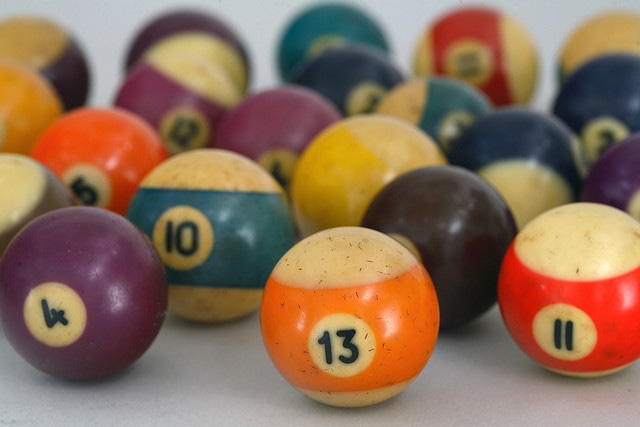
It’s hard to imagine a world without plastic, but these polymers, now ubiquitous, are in fact a fairly recent invention.
Here’s a look at some of the inventors of modern plastic. Each of these men influenced the next with his determination and critical inventions. They learned from the shortcomings of their predecessors’ innovations, and built on their ideas until finally the product met the expectations they all sought.
Alexander Parkes
Alexander Parkes was born in Birmingham, England, on December 29, 1813. His father made brass locks, and at a young age Parkes became his apprentice. He went on to work in metal foundries, becoming a metallurgist. His work there allowed him to understand and employ the art of electroplating — applying thin layers of metal to different items for decoration. His skill was unsurpassed, and he developed new techniques that allowed him to coat items as delicate as a spider web.
Parkes interest turned to the properties of rubber. He wanted to create a synthetic material that could be molded while hot. His first patent was issued in 1841 for his method of creating waterproof fabric with thin coats of rubber. He continued working with rubber and was awarded many more patents for processes that used the material for techniques combining electroplating and rubberizing, as well as for recycling rubber.
Parkes created the first fully synthesized plastic in 1885. He dissolved cellulose nitrate in alcohol, and camphor containing ether. The result was a product that could be easily molded when heated yet retained its shape and firmness when cold.
He called his invention Parkesine, and started the Parkesine Company in 1866. Unfortunately, it did not last. He could not produce the material inexpensively and on a large scale. On top of that, the material was flammable and prone to breaking. He sold the company to his partner, who created a few different plastics after that, but none had staying power.
Alexander Parkes lived to be 76 years old. He was married twice and had 17 children and more than 80 patents. He died on June 29, 1890.
John Wesley Hyatt
John Wesley Hyatt was born on November 28, 1837, in Starkey, New York. As a young man, he worked as a printer. At the time, the New York Billiard Ball Company was offering $10,000 to the person who could come up with a new material for making billiard balls that had all the characteristics of the original ivory balls. Ivory was expensive and becoming scarce, as were the elephants.
Hyatt’s interest was piqued. He tried different materials to make the billiard balls. Although he didn’t succeed, he was able to use one of his newly invented materials, which consisted of wood pulp and shellac, to make pressed dominoes and checkers and start a business.
He continued experimenting using Alexander Parkes’ solid cellulose Parkesine and another material, inventor Frederick Scott Archer’s liquid nitrocellulose. Using these two materials, Hyatt discovered a new substance he named Celluloid. The materials used for making Celluloid were nitrocellulose, which comes from wood or cotton and is flammable, camphor, a waxlike resin from Asian camphor trees, and alcohol. Hyatt created the new material by pressing the three materials together in a mold while heating them.
Celluloid was used for many products, but most notably among them were billiard balls, false teeth, and piano keys. Use of the product was limited due to its high flammability from the nitric acid used to make the nitrocellulose.
Celluloid film was used in filmmaking for more than 120 years. Due to the expensive and difficult production of celluloid film, the industry began replacing it in the 1950s with a similar version using acetic acid instead of nitric acid. The films made using celluloid are fragile and flammable so they are kept under strict conditions. Today the material is used for pingpong balls and guitar picks.
John Wesley Hyatt passed away on May 10, 1920 with more than 200 patents to his name.
Leo Hendrik Baekeland
Leo Hendrik Baekeland was born in Ghent, Belgium, on November 14, 1863. He excelled in chemistry and physics at the University of Ghent. Hyatt’s celluloid influenced Baekeland. He invented a photographic paper he called Velox, which permitted the development of photographs using artificial light. The development of photographs before Velox had to be done under sunlight. George Eastman of Eastman Kodak bought the technique from Baekeland for $750,000 in 1899.
Baekeland continued working and invented the first thermoset plastic, which he named Bakelite. The resin was extremely malleable and could be permanently set under high pressure. The material, which was made of carbolic acid and formaldehyde, was easily reproducible, inexpensive, and not flammable.
After receiving a patent in 1909, Baekeland presented Bakelite to the world. The products made using the novel material included radios, costume jewelry, appliances, and much more. When his patents ran out, competitors were quick to market similar products.
Leo Hendrik Baekeland died at the age of 80 on February 23, 1944.
Image by Gregory Tobias, from the collection of the Chemical Heritage Foundation.
Source: “The Men Who Invented Plastic,” Connecticut Plastics, www.connecticutplastics.com.
Source: “Alexander Parkes Biography,” History of Plastic, www.historyofplastic.com.
Source: “Alexander Parkes — Materials Man and Polymath,” by Sue Mossman, www.sciencemuseum.org.uk.
Source: “John Wesley Hyatt (1837-1920),” Plastics Historical Society, https://www.plastiquarian.com/.
Source: “John Wesley Hyatt,” by the editors of The Encyclopædia Britannica, www.britannica.com.
Source: “Leo Hendrik Baekeland,” by the editors of The Encyclopædia Britannica, www.britannica.com.
Source: “Leo Hendrik Baekeland,” www.pbs.org.
